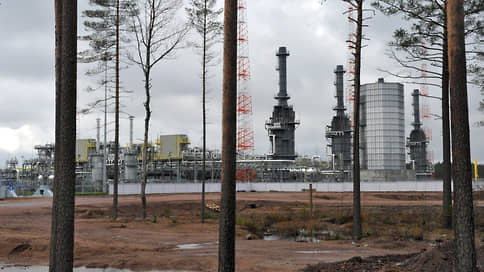Nord Streams will undergo decompression
[ad_1]

According to Kommersant, Gazprom intends to mothball the equipment at the Portovaya and Slavyanskaya compressor stations, which pumped gas into the Nord Stream gas pipeline system. Both pipelines were blown up and are now out of service. Analysts call the decision logical: it is now difficult to name the timing of the restoration of gas pipelines, and the transfer of equipment to other compressor stations is impossible.
Gazprom intends to mothball gas-pumping equipment at the Portovaya and Slavyanskaya compressor stations that supplied gas to the Nord Stream and Nord Stream-2 pipelines, Kommersant sources familiar with the company’s plans say. Gazprom declined to comment.
After conservation, all equipment will remain at the stations, Gazprom does not plan to transport it to other sites, says one of Kommersant’s interlocutors. If necessary, it can be put into operation in a short time, he adds.
Both lines of the Nord Stream system and one of the lines of the parallel Nord Stream 2 were allegedly subjected to sabotage attacks on September 26. As a result, large segments of pipelines at the bottom of the Baltic Sea were disabled. The second string of Nord Stream 2 remains intact and, in theory, can supply gas.
Nord Stream and Nord Stream 2 were not commercially delivering gas to Europe at the time of the explosions. Deliveries via Nord Stream were halted on August 31 because, according to Gazprom, Siemens turbines at the Portovaya station failed due to lack of proper maintenance due to sanctions.
Nord Stream 2 was never put into commercial operation, although its construction was completed in September 2021, and the gas pipeline was filled with gas in December of the same year. On the eve of the start of military operations of the Russian Federation in Ukraine, Germany stopped the last stage of certification of the pipeline.
At the Portovaya compressor station, nine gas pumping units are used (consisting of a turbine and a compressor). Of these, six are Siemens SGT-A65 gas turbines (made on the basis of Rolls-Royce aircraft engines) and three more are less powerful SGT-A35.
In normal mode, Portovaya should have six turbines in operation, of which five machines pump gas, and one is in a hot reserve. Now none of the machines are in working condition, and one remains in Germany after repairs made in Canada. 11 GPA-32 Ladoga were installed at the Slavyanskaya CS.
“Today, one must understand that there is no answer to the question of how and why to restore the Nord Stream threads if the engines … (compressor.— “b”) the Portovaya station is out of service,” said Alexei Miller, head of Gazprom, on October 12.
Sergei Kondratiev from the Institute of Energy and Finance considers the conservation of compressor station equipment a logical step: the restoration of the Nord Streams’ performance is unlikely to begin in the near future, the transfer of equipment to other compressor stations is also not relevant, since Portovaya uses unique gas compressor units.
According to the expert, conservation work may take up to three to five months, much will depend on who will be involved in this. Conservation costs, adds Mr. Kondratiev, are difficult to accurately estimate, but on average they can reach up to 2-3 billion rubles.
[ad_2]
Source link





